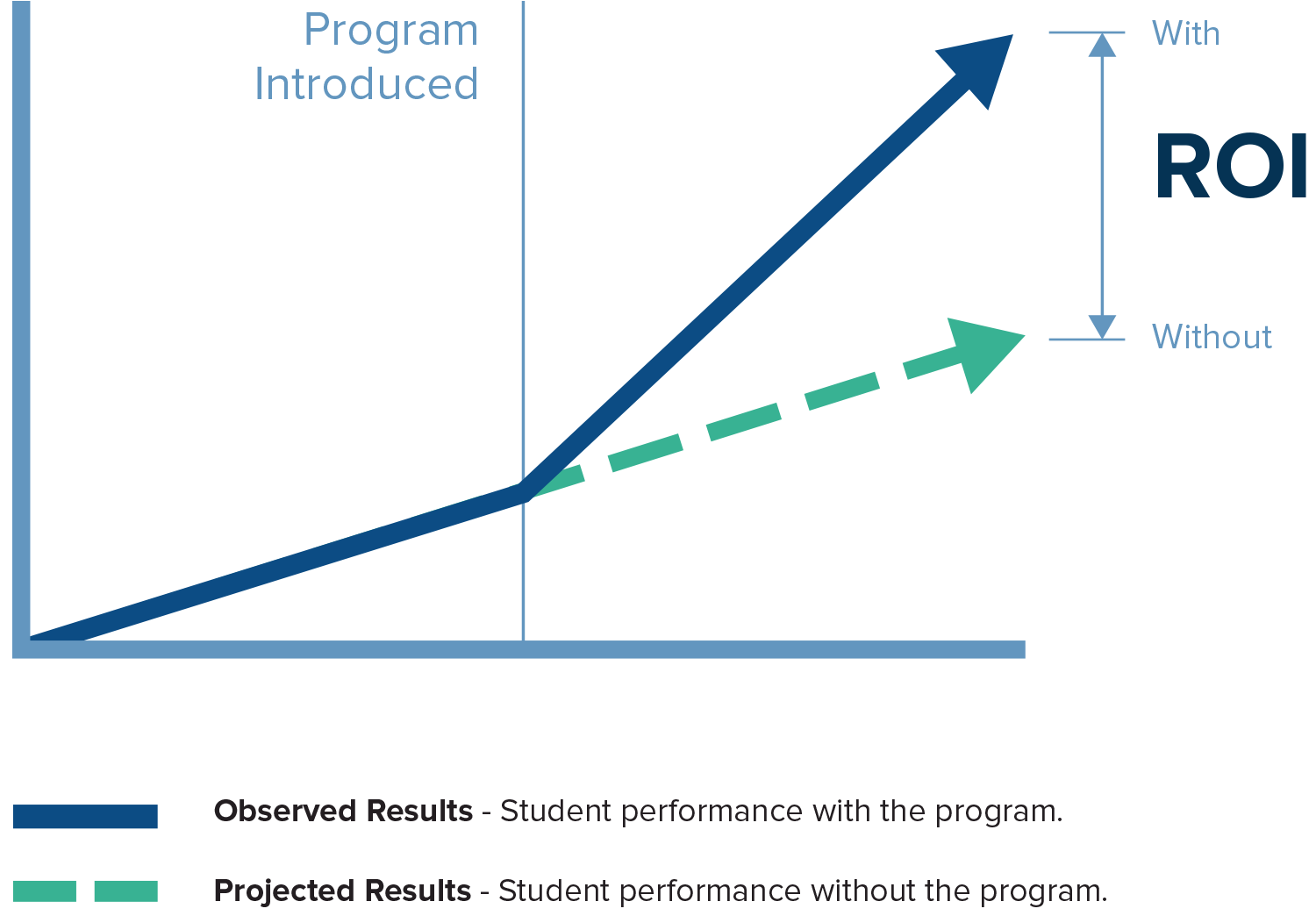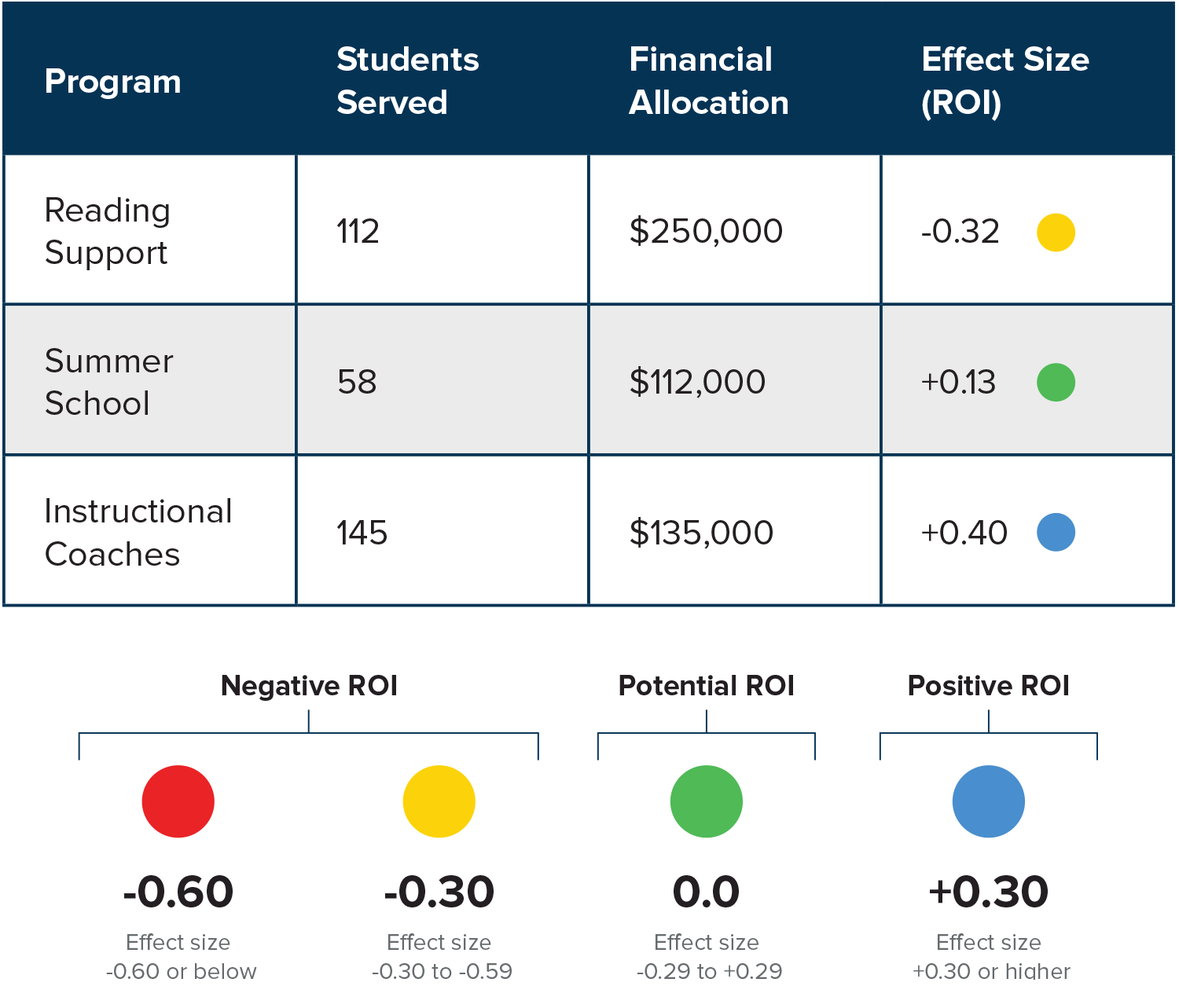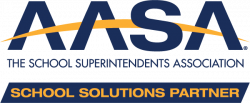School leaders make decisions every day about how to best allocate community resources to ensure all students receive a high-quality education. Documenting the impact of programmatic investments is the essence of evidence-based practice.
Academic return on investment (ROI) is an analytic approach that quantifies the impact of a particular program or intervention on student growth.
Asking the
Right Question
The key insight that motivates academic ROI is recognizing that students will continue to grow with or without a particular investment. Academic ROI quantifies the impact of an investment on student growth above and beyond growth that would have happened anyway.
Districts often ask:
“How did students in the program grow?”
Academic ROI asks:
“How did students in the program grow compared to how they would have grown without the program?”

An In-Depth Look at Academic Return on Investment (ROI)
Academic ROI is measured by comparing student growth as a result of a particular program to student growth without the program. Learn the process of measuring academic ROI and how to leverage predictive models to quantify the impact that specific programs have on student learning.
The Process of Academic ROI
Academic ROI uses a disciplined method of inquiry that leverages the scientific method.
ECRA’s ROI Methodology
ECRA analyzes an individual student’s longitudinal growth trajectory, and the trajectory of similar students to create a personalized projection for each student. The projection represents where a student would likely perform without the program. We then measure the distance between observed performance with the program to projected performance without the program.


Reporting Results
ECRA reports academic ROI using the metric of effect size. We categorize effect sizes using well established research-based thresholds to aid interpretation.
Imagine evaluating every program and intervention every year for academic ROI. Over time, ensure investments are directed towards programs with positive ROI.

ECRA Group is proud to partner with The School Superintendent’s Association (AASA) to help educate district leaders on a variety of topics, including academic return on investment (ROI). Recently, Dr. John Gatta, CEO of ECRA, conducted a webinar with Huntley Community School District 158, was interviewed by Education Talk Radio, and was published in School Administrator magazine. All provide valuable insights into how measuring ROI at a school district can help quantify the impact of a particular program or intervention on student growth.
Interested in discussing academic return on investment (ROI) with us?
Send us an email, give us a call, or complete the adjacent form. We would enjoy the opportunity to have a discussion.
(847) 318-0072
questions@ecragroup.com


